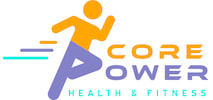STRETCH & REST CARE for the wellness warrior |
|
Do you feel pain when you stretch? If so, it’s a sign you’ve gone too far. Remember healthy tissue isn’t stiff. It’s elastic. Bungee cord like versus rope like. You can bring the spring back to your body with stretching no matter your age but there is an art to stretching. Just like we've evolved from flip phones to smart phones, we've made advances in stretching that can help you have better results. First you have to learn to stop over-stretching. If you experience pain with stretching, your body will tighten up more. Why? The body’s response to pain is to protect, tighten up, guard. Gentle stretching is key to stop over-stretching. Stop stretching as far as you can go. Start stretching at about 90% of your pain-free range of motion. The goal is to calm the body so the tissue will lengthen and let go. Here are some basic stretch principles to practice that'll help improve your elasticity: BE GENTLE Don’t force the motion or your body will tighten up. Check in with your face and neck. Are you tensing up because the movement is uncomfortable? That’s a sign you’re stretching too far. BREATHE Always breathe while stretching to help hydrate the tissue and increase the circulation to the area. Slow, deep breaths are calming. FOCUS Be mindful while stretching and focus on what you are feeling in your body as you stretch. Imagine restoring the spring in the tissue vs. pushing to your limits to get taller or more flexible. Stretching the fascia can feel like a burning sensation, but it should go away as soon as you stop stretching. Feel for the tissue to let go, releasing before you stretch farther into the movement. CHANGE THE TEMPO Stretching with proper breathing prepares your nervous system for your next activity. Fast, shallow breaths will turn on your nervous system. Slow, deep breaths will calm your nervous system. Breathe and stretch faster before exercise. Breathe and stretch slower after exercise for recovery. CHECK YOUR FORM Stretch with good form and control. Hold positions for 2-3 breaths before your workouts and a little longer after workouts. MOVE MORE Take mini movement breaks throughout the day to help your fascia be healthy and elastic. It all adds up whether it’s 3 breaths, 3 reps, or 3 minutes of movement. Become more mindful of these principles as you stretch each day to help you feel and move better. Let pain be your guide at first as a sign that you need to back off. Go slow, breathe, and let the tissue let go before you stretch deeper. If you want to make lasting changes in your flexibility and posture, you’ll want to learn how to use fascia stretching and trigger point massage tools. We show you how in our online Rest Camps. Camp routines are designed to help you release your most glued down stuck spots (whether they’re from chronic injuries or intense workouts) in less than 10 minutes a day so you can move & perform pain-free. Get on the interest list here. Let’s get you stretching with (lasting) benefits! P.S. Maximize your stretch results with this flexibility hack: The One Thing To Do Before You Stretch.
0 Comments
Leave a Reply. |
Mollie Miller, PT
|
TERMS OF USE PRIVACY POLICY
Core Power Health & Fitness, Inc. does not provide medical advice. Consult a licensed physician prior to beginning any exercise or nutrition program.
Copyright © 2015 Core Power Health & Fitness Inc.
Core Power Health & Fitness, Inc. does not provide medical advice. Consult a licensed physician prior to beginning any exercise or nutrition program.
Copyright © 2015 Core Power Health & Fitness Inc.



 RSS Feed
RSS Feed